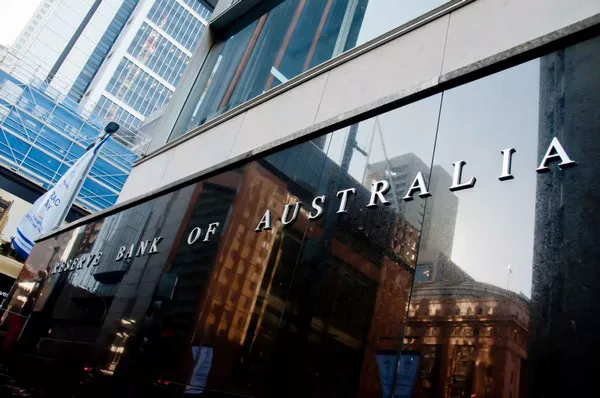Inflation plays a crucial role in the economic landscape of any country. It is a measure of the rise in the general price level of goods and services over time, impacting various aspects of an economy, from purchasing power to investment decisions. Central banks around the world actively monitor and manage inflation to achieve economic stability and growth. In Australia, the Reserve Bank of Australia (RBA) is tasked with the responsibility of setting and achieving a specific inflation target, which serves as a key pillar of the country’s monetary policy. This article explores what the RBA’s inflation target is, its significance, and how it influences Australia’s monetary policy.
The RBA and Its Mandate
The Reserve Bank of Australia (RBA) is Australia’s central bank, established in 1959, responsible for formulating and implementing monetary policy. The RBA’s primary mandate, as stipulated in the Reserve Bank Act 1959, is to ensure price stability, full employment, and the economic prosperity of Australia. In fulfilling this mandate, the RBA aims to maintain a stable and sustainable rate of economic growth while keeping inflation within a target range. The concept of an inflation target is instrumental in achieving this overarching goal.
What Is the RBA Inflation Target?
The RBA’s inflation target is a specific annual rate of inflation that the bank seeks to achieve over time. As of my last knowledge update in January 2022, the RBA’s inflation target is set at a low and stable annual increase in the Consumer Price Index (CPI) within the range of 2% to 3%. This target is often referred to as the “medium-term” target, meaning the RBA aims to keep inflation within this range over the business cycle rather than achieving it precisely each year.
In practical terms, this means that the RBA’s monetary policy decisions, including setting the official cash rate, are aimed at achieving and maintaining an inflation rate within the 2% to 3% range. When the inflation rate is below the target range, the RBA may implement expansionary monetary policies to stimulate economic activity, such as lowering interest rates. Conversely, when inflation exceeds the target range, the RBA may use contractionary policies, such as raising interest rates, to cool down the economy.
Significance of the Inflation Target
The RBA’s inflation target is significant for several reasons:
Economic Stability: A well-defined inflation target provides clarity and transparency to businesses, consumers, and financial markets. It ensures that there is a clear benchmark for price stability, allowing economic agents to make more informed decisions.
Monetary Policy Effectiveness: The inflation target acts as an anchor for the RBA’s monetary policy. By explicitly stating its target, the RBA provides a clear objective for its policy decisions, helping to guide market expectations and influencing the behavior of investors and businesses.
Price and Wage Expectations: The target influences the expectations of price and wage growth among individuals and businesses. When people know that inflation will be contained within a specific range, they are less likely to make hasty economic decisions based on fear of runaway inflation.
International Comparisons: An explicit inflation target allows for meaningful comparisons between the RBA and other central banks worldwide. It provides a basis for assessing the effectiveness of Australia’s monetary policy in achieving its economic goals.
Economic Growth and Employment: Achieving the inflation target is a key element in ensuring a stable economic environment conducive to sustainable economic growth and full employment. When inflation is stable, it reduces uncertainty and encourages investment and job creation.
The Inflation Target in Practice
The RBA monitors inflation primarily through the Consumer Price Index (CPI), which tracks the price changes of a basket of goods and services that represent the average spending patterns of Australian households. When the inflation rate falls outside the 2% to 3% target range, the RBA may take various measures to bring it back within the target.
For instance, if inflation is running below the target range, the RBA may choose to lower the official cash rate. A lower cash rate leads to lower borrowing costs for businesses and consumers, stimulating spending and investment. This, in turn, can help push inflation back into the target range. Conversely, if inflation is exceeding the target range, the RBA might decide to raise the cash rate to reduce borrowing and spending, thereby cooling down the economy and bringing inflation back within the target.
Challenges and Criticisms
While the RBA’s inflation target has been a cornerstone of Australian monetary policy for several decades, it is not without its challenges and criticisms. Some of the key issues include:
Economic Uncertainty: External factors, such as international economic conditions and supply shocks, can influence inflation and may make it difficult for the RBA to control it precisely within the target range.
Real Wage Growth: High inflation can erode the purchasing power of wages. In cases where inflation exceeds the upper bound of the target range, workers may find it challenging to maintain real wage growth.
Inequality: The effectiveness of inflation targeting in addressing income and wealth inequality has been debated. Some argue that it can exacerbate inequality, especially when asset prices rise faster than wages.
Limited Scope: Inflation targeting focuses primarily on price stability and does not directly address other important economic goals, such as reducing unemployment or addressing environmental concerns.
Conclusion
The RBA’s inflation target is a pivotal element of Australia’s monetary policy framework. It provides clarity, transparency, and a clear benchmark for price stability, which contributes to economic stability and growth. By aiming to keep inflation within the range of 2% to 3%, the RBA endeavors to strike a balance between promoting economic growth and maintaining price stability. However, it is important to acknowledge that achieving and maintaining this target can be challenging, given the various economic, social, and global factors at play. As the RBA continues to adapt its policies to changing economic conditions, the inflation target remains a key tool in its pursuit of economic prosperity for Australia.


